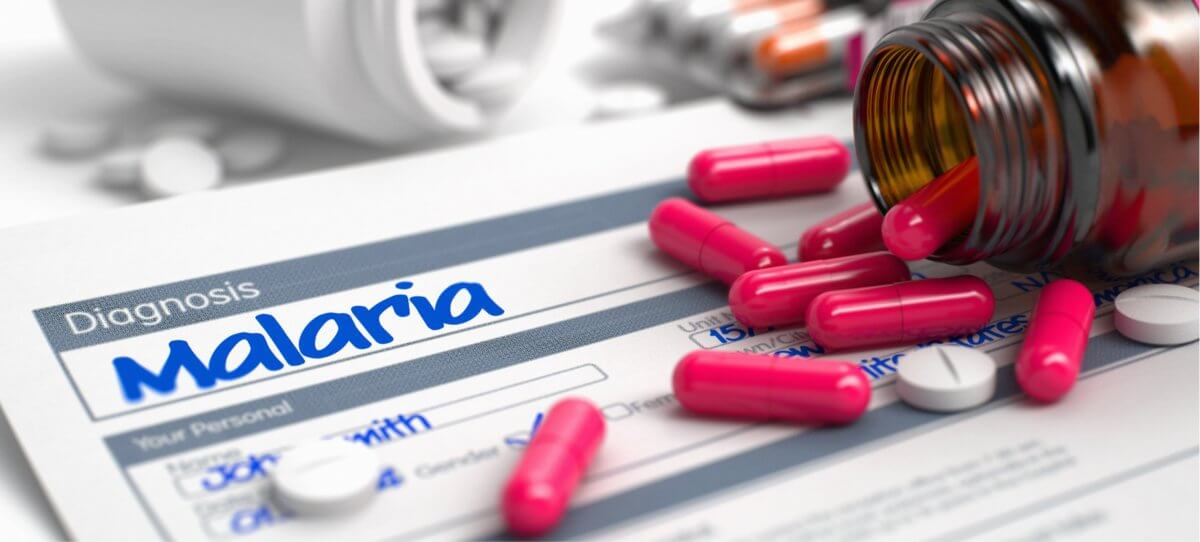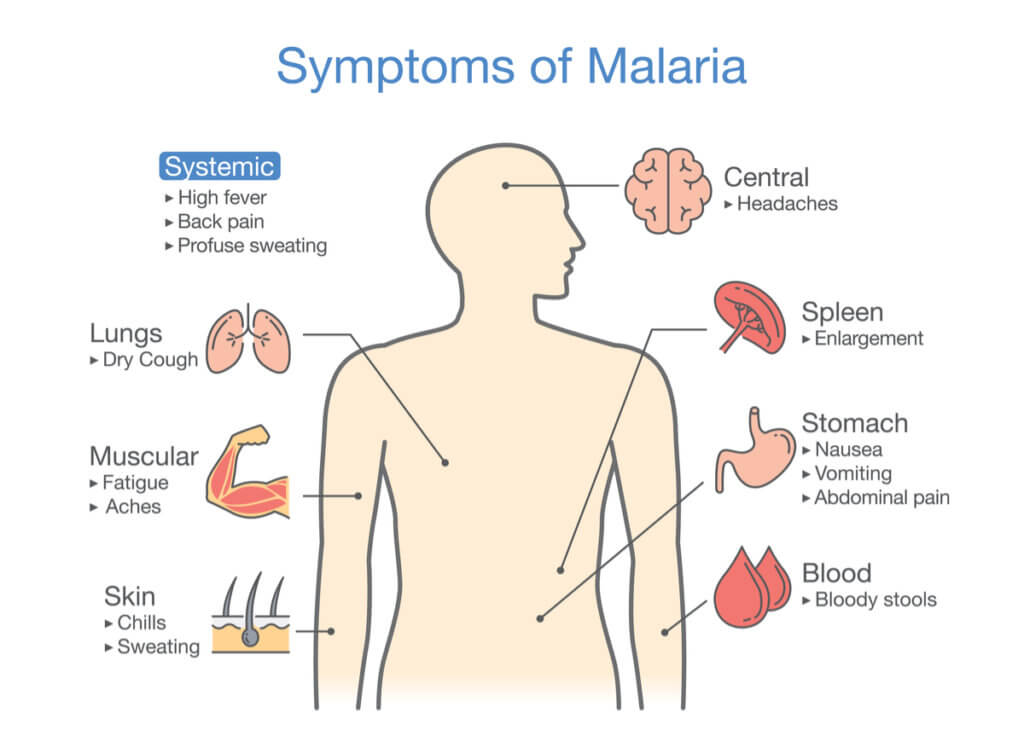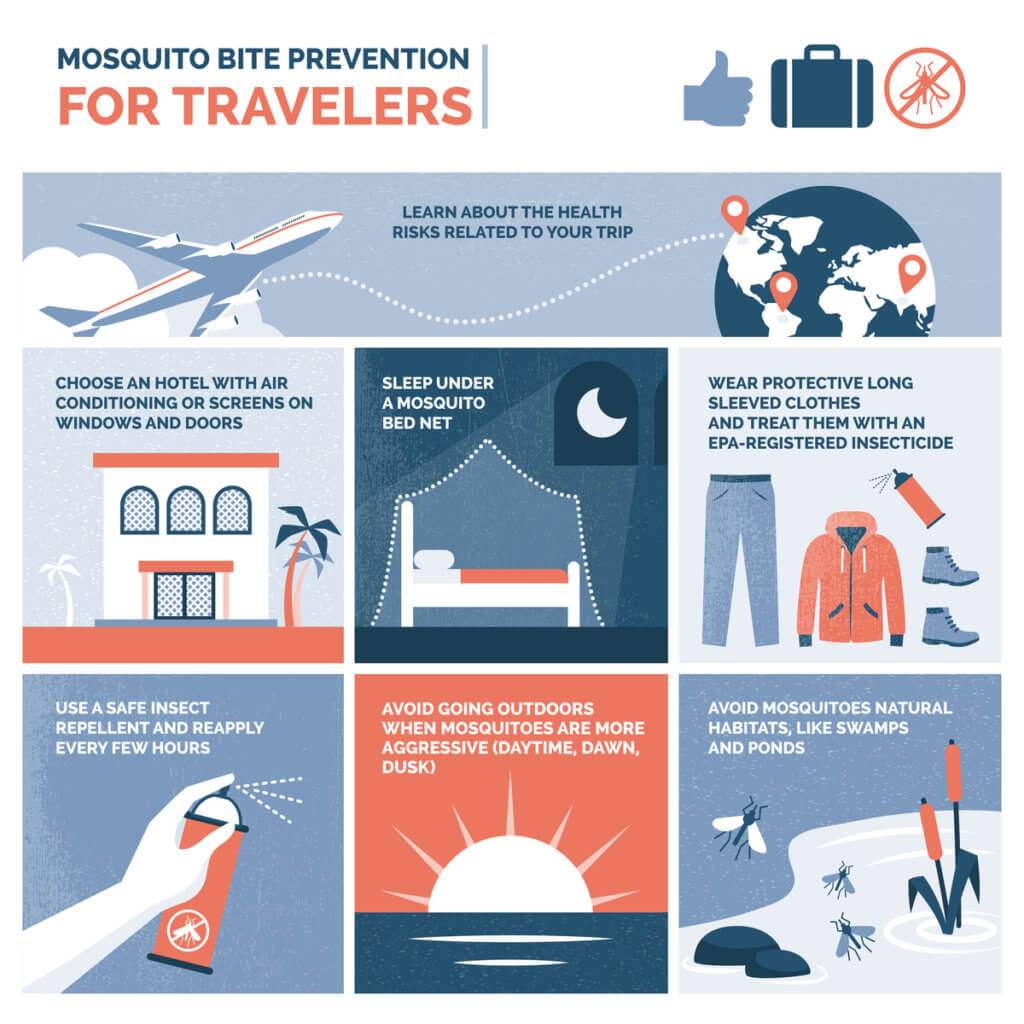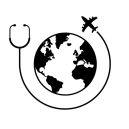Definitive Guide to Malaria for International Travellers

Malaria occurs in more than 100 countries around the world, primarily in tropical and subtropical regions of Asia, Africa, and the Americas.
The World Health Organization reports that more than 200 million people diagnosed with malaria each year. The disease claims nearly 450,000 lives annually, mainly children under the age of 5 in sub-Saharan Africa.
For Canadians undertaking international travel to malaria-endemic areas, the disease can be potentially fatal if left untreated. However, following malaria prevention recommendations and treatment with antimalarial drugs can prevent serious complications.
What is Malaria? How Does It Spread?

Malaria is an infectious disease caused by a protozoan (one-celled) parasite known as Plasmodium. Five types of Plasmodium cause malaria in humans. The parasite enters the blood and initially grows and multiplies in the liver and later in the red blood cells of the infected person.
The most common way for a malarial infection to spread from person to person is through a bite from an infected female Anopheles mosquito. These mosquitoes thrive in tropical climates and are usually active between dusk and dawn.
The mosquitoes get infected during a blood meal from an infected person and transfer the parasite to another person when they bite again. Rarely, malaria can spread from mother to fetus, during a blood transfusion, or by sharing needles. Malaria is not contagious and does not spread through casual contact or sexual activity.
Malaria symptoms
Symptoms of malaria include a flu-like illness with fever, chills, headache, muscle aches, and fatigue. Some people experience gastrointestinal symptoms such as nausea, vomiting, and diarrhea. Colonies of malarial parasites destroy red blood cells in infected individuals, which may cause anemia and jaundice.
Untreated, malaria can progress to kidney failure, respiratory failure, mental confusion, seizures, coma, and even death. Malaria requires urgent and aggressive treatment. Travelers should seek immediate medical attention if any of these symptoms are present up to 1 year after returning home.
Related Read: First Malaria Vaccine Approved by World Health Organization
Malaria Prevention and Treatment for Travellers

For travelers headed to malaria-risk areas, the following precautions are recommended:
• Prevent mosquito bites with insect repellants, insecticidal nets, and protective clothing, especially between sunset and sunrise.
• Take preventive medication before, during, and after travel to a malaria-endemic country.
Malaria is diagnosed by identifying the parasite in a person’s blood sample with examination under a microscope. In areas where reliable laboratory diagnosis is not available, rapid diagnostic tests are a valuable alternative and can provide results in 2-15 minutes.
There are several medications that are effective against the malarial parasite, including chloroquine, mefloquine (Lariam), primaquine, quinine, and atovaquone-proguanil (Malarone, ATQ-PG).
A healthcare provider can decide on the best drug for the treatment of malaria, depending on the type of Plasmodium parasite identified in the blood, the area where the infection was acquired, and drug resistance, as well as the patient’s health status, allergies, and coexisting medical conditions.
It is worth remembering that an overdose of antimalarial drugs such as chloroquine can be fatal, so they must be stored carefully in child-proof containers.
Malaria Risk: Who Needs to Take Extra Precautions?
Certain individuals are at increased risk of malaria, including pregnant women, infants and young children, and people with compromised immunity. It is a good idea for such people to avoid travelling to areas where malaria transmission is common.
However, if travel is unavoidable, malaria prevention medicines are available. For example, mefloquine can be started up to a month before travel, which provides an opportunity to identify any potentially serious adverse effects and change the drug if needed.
For the general population, the risk of malaria is higher when:
• Visiting a high-risk region such as West Africa or areas where Plasmodium falciparum is present (this species of the parasite is associated with a high death rate)
• Visiting a malaria-endemic area for a longer period of time
• Spending time in remote or rural areas
• Visiting during the rainy season or soon after
• Spending time outdoors between dusk and dawn
Top Countries Where Malaria is Present
For international travelers from Canada and elsewhere, malaria risk is highest in regions where the disease is most prevalent.
The WHO reports that more than 90 percent of malaria cases occur in the African Region, followed by South East Asia (5 percent), and the Eastern Mediterranean Region (2 percent).
The top 5 countries that carry nearly half the global malaria burden are:
• Nigeria
• The Democratic Republic of the Congo
• Mozambique
• India
• Uganda
If you are planning to travel to areas where malaria is present, talk to your local travel clinic today about precautions and preventive antimalarial medication.
History of Malaria
Malaria has a long and complex history, affecting humans for thousands of years.
The origins of malaria are not well understood, but it is believed to have originated in Africa and has been present in humans for more than 50,000 years. Evidence of malaria has been found in ancient Egyptian mummies, and the disease is mentioned in early Chinese, Greek, and Roman medical texts.
Throughout history, malaria has been a major health concern in many parts of the world, especially in tropical and subtropical regions. In the 19th and early 20th centuries, malaria was common in many parts of Europe and the United States, especially in rural areas.
In the late 19th and early 20th centuries, major progress was made in understanding the transmission of malaria and in developing effective treatments. In 1897, Ronald Ross, a British physician, confirmed that mosquitoes were responsible for transmitting the parasite that causes malaria. This discovery led to the development of measures to control the mosquitoes that spread the disease, such as insecticide use and the construction of mosquito nets.
The development of antimalarial drugs in the 20th century, such as chloroquine and artemisinin, has also had a significant impact on reducing the burden of malaria. However, despite these efforts, malaria continues to be a significant public health problem in many parts of the world, particularly in Africa. Every year, hundreds of millions of people are infected with the disease and millions die from its complications. Efforts to control malaria and to develop new treatments and vaccines are ongoing.
References:
- https://www.who.int/malaria/travellers/en/
- https://www.cdc.gov/malaria/travelers/index.html
- https://www.cdc.gov/malaria/about/faqs.html
- https://www.canada.ca/en/public-health/services/diseases/malaria/causes-malaria.html
- https://www.who.int/malaria/media/world-malaria-report-2018/en/

